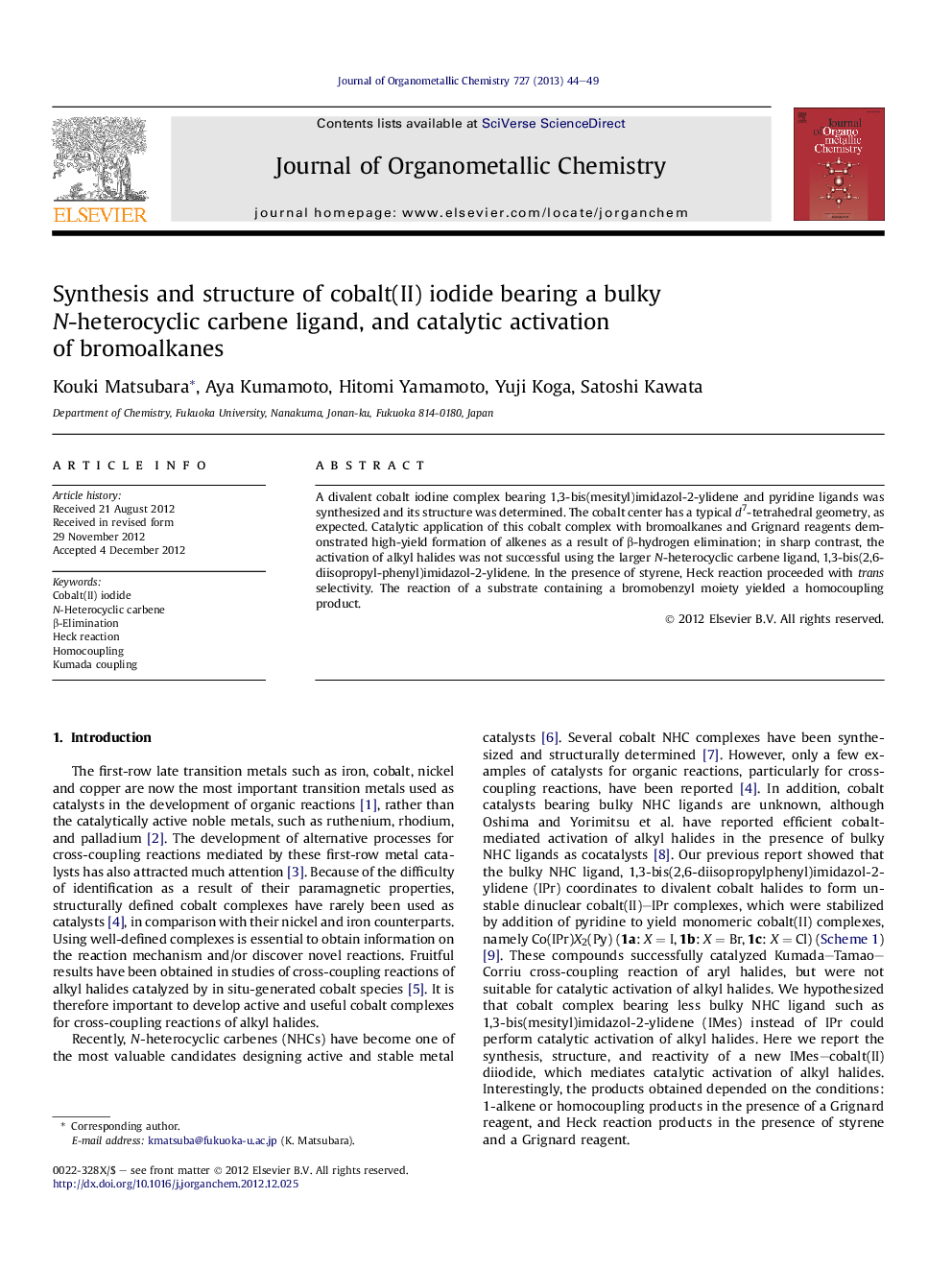| Article ID | Journal | Published Year | Pages | File Type |
|---|---|---|---|---|
| 1325837 | Journal of Organometallic Chemistry | 2013 | 6 Pages |
A divalent cobalt iodine complex bearing 1,3-bis(mesityl)imidazol-2-ylidene and pyridine ligands was synthesized and its structure was determined. The cobalt center has a typical d7-tetrahedral geometry, as expected. Catalytic application of this cobalt complex with bromoalkanes and Grignard reagents demonstrated high-yield formation of alkenes as a result of β-hydrogen elimination; in sharp contrast, the activation of alkyl halides was not successful using the larger N-heterocyclic carbene ligand, 1,3-bis(2,6-diisopropyl-phenyl)imidazol-2-ylidene. In the presence of styrene, Heck reaction proceeded with trans selectivity. The reaction of a substrate containing a bromobenzyl moiety yielded a homocoupling product.
Graphical abstractA divalent cobalt iodine complex bearing 1,3-bis(mesityl)imidazol-2-ylidene and pyridine ligands was synthesized and characterized. Catalytic applications of this complex with 1-bromooctane and Grignard reagents gave β-elimination or Heck reaction products. The reaction of 1-bromofluorene yielded a homocoupling product, suggesting benzyl radical formation.Figure optionsDownload full-size imageDownload as PowerPoint slideHighlights► A new divalent cobalt complex with a NHC ligand was prepared and determined. ► The cobalt complex is active toward C–Br bond activation of alkyl bromides. ► β-Elimination, Heck reaction and homo-coupling reaction products were obtained.
